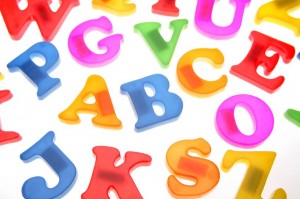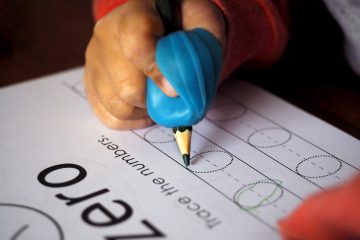In this installment of the fundamental reading skills series, we’ll be focusing on phonics. Phonics is the relationship between a letter and its sound. For example, the letter “d” makes the /d/ sound when spoken out loud. Individual letter sounds, as well as some sounds resulting from combinations of letters such as “ch” and “sh,” are called phonemes.
Phonics gives beginning readers the strategies they need to sound out words, so their reading can become automatic. Once a child reads without constantly struggling to figure out each word, real understanding (and enjoyment!) of the reading can take place. Here are some ideas for bolstering your child’s phonics skills:
Beginner Activities
- Practice letters with pictures: Use letters with pictures that contain the letter sound to demonstrate sounds to your child. For example, show your child a flash card with a picture of a dog on it next to the letter d, and say the word “dog” out loud, emphasizing the /d/ sound.
- Point out letters: Point out letters within words in books, around the house, on signs, and so on, and explain the sounds those letters are making within the words.
- Introduce your child to phonics-related online media: Let your child watch videos that demonstrate letter-sound relationships, and introduce your child to interactive phonics activities.

Intermediate Activities
As your child becomes more comfortable with the sounds that letters make, you can begin to help your child connect the letter-sounds into words. Some of the best words to start with are short, phonetically regular words (that is, words you can sound out, as opposed to words that include silent or unusually pronounced letters, like the word “thought”).
Many of the easiest beginning words are CVC words (consonant-vowel-consonant words). Examples are “mat,” “big,” and “get,” which are phonetically regular, short CVC words comprised of phonemes that are easy to identify. To give your child practice with CVC words, you can:
- Buy or create CVC word puzzles: Find a commercially produced product, or simply create your own puzzle by writing out a CVC word and then dividing it into separate letters. Puzzles that include a picture of the word can help children connect the word and the letters to meaning.
- Buy or create a CVC flipbook: Again, commercially produced products are available, but you can also make your own. Simply write out the last two letters of a CVC word—for example, “-at”— and then add a stack of letters at the front of the word, for example “m,” “b,” “c,” “r.” Your child can then practice creating different words by keeping the “-at” sound at the end of the word the same, and varying the beginning sounds to form the words “mat,” “bat,” “cat,” and “rat.”
- Make a Letter Wall: Designate a spot in your home—perhaps the refrigerator door, or a bulletin board—and make it into a letter wall. Place magnetic or adhesive letters on the wall, and let your child create his or her own CVC words by moving the letters around.
- Play writing games: If your child has begun to write some letters, you can begin to offer him practice with encoding (i.e. using knowledge of letters and letter sounds to write words). Play guessing games such as asking your child to write the letter that comes at the beginning of the word “bed.”
Advanced Activities
As your child’s developing reading skills continue to grow, you can build on these activities to include more advanced objectives. You can use many of the same resources as before such as flash cards, online activities, puzzles, but expand the material to include new and more complex aspects of phonological awareness:
- Digraph and blend activities: Digraphs are two or more letters grouped together but making a single sound, for example “th” and “ch.” Blends are two or more consonants grouped together but making separate sounds, for example “br” and “gl.” You can let your child practice with recognizing digraphs and blends through activities involving flashcards, puzzles, online games and media, and by pointing them out in text.
- Blending and substitution games: Once a child can comfortably blend the letters “c” “a” “t” into “cat,” you can progress to more complicated words. For example, give your child the letters “f” “r” “o” “g” and let him or her practice blending those letters into a word. You can also introduce substitution activities, for example asking, “What happens when you take away the ‘r’ in “frog?”
- Segmenting activities: Working in the opposite direction as the blending activities, you can have your child start with a whole word, such as “block,” and break it into pieces. You can use the pieces to make a puzzle, or a flipbook with “-ock” at the end, or create a list of rhyming words (sock, rock, dock).
Once your child has mastered phonics, you can rest assured that reading is just around the corner! That means it’s time to move on to the next essential reading skill—vocabulary. We’ll be discussing this skill in more detail in our next Reading Essentials post! In the meantime, you can check out more fun phonics activities here, and be sure to let us know which strategies are working best for your child. Best of luck and happy reading!


